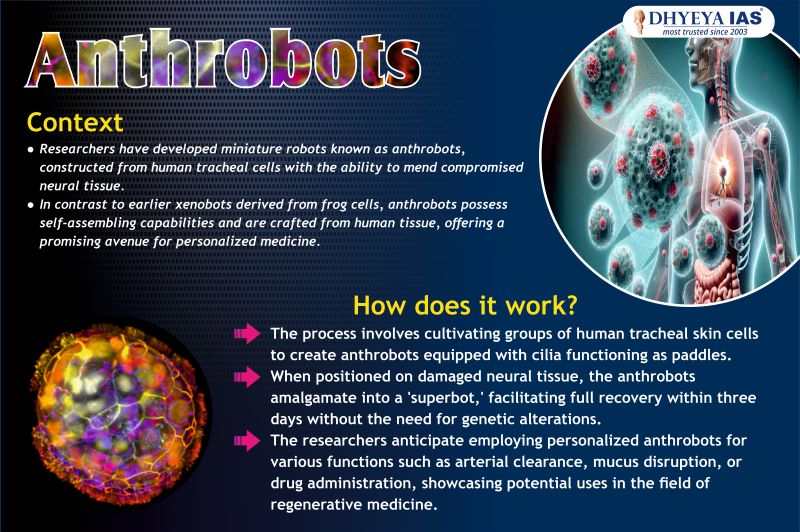
Context
- Researchers have developed miniature robots known as anthrobots, constructed from human tracheal cells with the ability to mend compromised neural tissue.
- In contrast to earlier xenobots derived from frog cells, anthrobots possess self-assembling capabilities and are crafted from human tissue, offering a promising avenue for personalized medicine.
How does it work?
- The process involves cultivating groups of human tracheal skin cells to create anthrobots equipped with cilia functioning as paddles.
- When positioned on damaged neural tissue, the anthrobots amalgamate into a 'superbot,' facilitating full recovery within three days without the need for genetic alterations.
- The researchers anticipate employing personalized anthrobots for various functions such as arterial clearance, mucus disruption, or drug administration, showcasing potential uses in the field of regenerative medicine.
